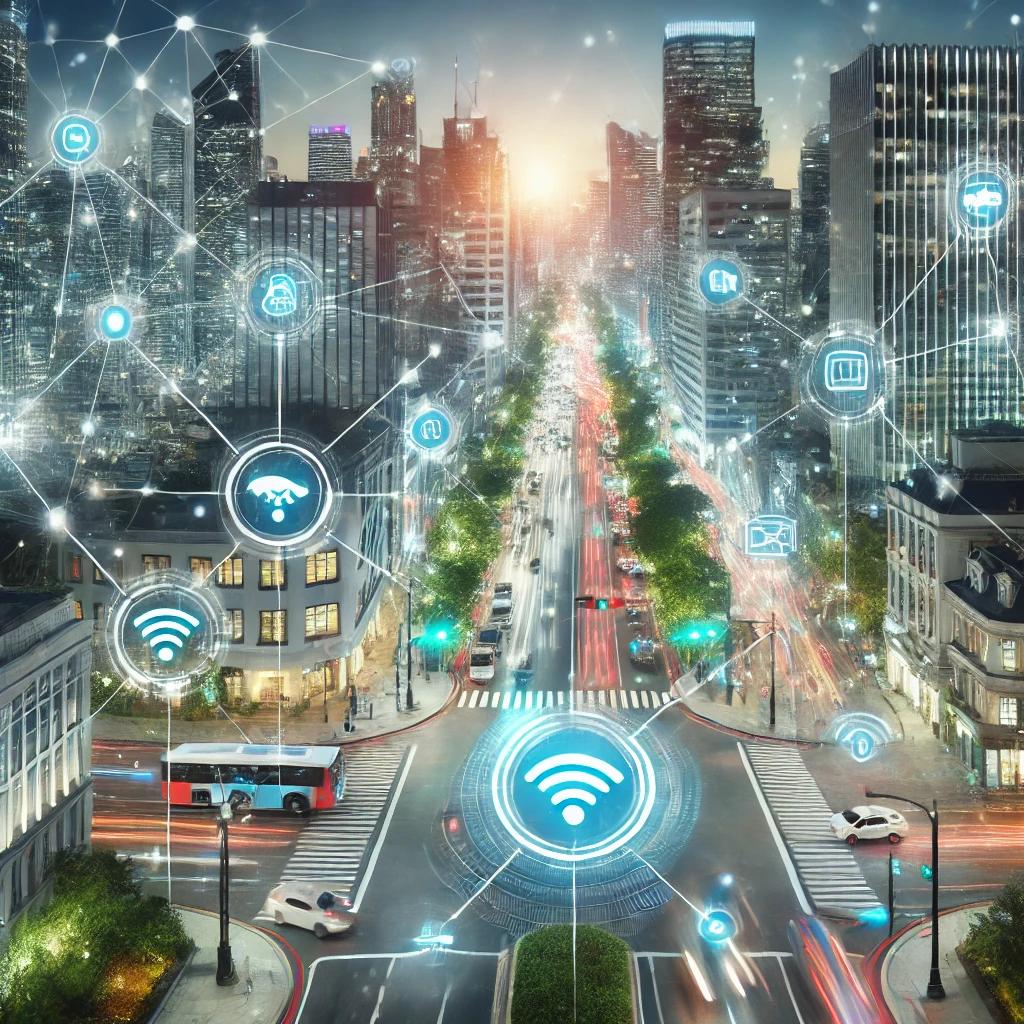
The rapid advancement of smart technology has revolutionized home and industrial automation. Wireless smart sensors play a crucial role in this transformation by enabling seamless monitoring and automation of various processes. From motion sensors to leak detectors and air quality monitors, these devices enhance security, improve energy efficiency, and ensure a healthier living environment.
In this article, we will explore the fundamentals of wireless smart sensors, their key components and functionalities, comparisons with alternative solutions, challenges, future trends, and real-world applications. By the end, you’ll have a comprehensive understanding of how these innovative technologies are shaping the future of automation.
Background & Fundamentals
The Evolution of Wireless Smart Sensors
Wireless smart sensors have evolved from basic wired monitoring systems to sophisticated, AI-driven devices that offer real-time data collection and automation. Their development has been driven by advancements in wireless communication technologies such as Wi-Fi, Zigbee, Z-Wave, and LoRaWAN.
How Wireless Smart Sensors Work
These sensors detect environmental changes, such as motion, temperature fluctuations, humidity levels, or gas leaks, and transmit data to a central hub or cloud-based platform. This data can then trigger automated actions, alerts, or reports, allowing for proactive decision-making.
Industry Relevance & Market Growth
According to industry reports, the smart sensor market is expected to grow exponentially due to increased demand for smart homes, industrial IoT applications, and energy-efficient solutions. The adoption of wireless automation is driven by factors such as cost-effectiveness, ease of installation, and integration with AI-driven analytics.
Key Components & Functionality
1. Motion Sensors
- How They Work: Motion sensors use infrared (PIR), ultrasonic, or microwave technologies to detect movement.
- Applications: Used in home security systems, smart lighting automation, and energy-saving solutions.
- Benefits: Enhance security, reduce energy consumption, and enable smart home automation.
2. Leak Detectors
- How They Work: These sensors detect water leaks or gas leaks through moisture levels or chemical sensors.
- Applications: Found in smart homes, industrial safety systems, and commercial buildings.
- Benefits: Prevent water damage, reduce maintenance costs, and enhance safety.
3. Air Quality Monitors
- How They Work: Measure pollutants such as CO2, VOCs, and particulate matter using advanced sensors.
- Applications: Used in homes, offices, and industrial environments to maintain air quality.
- Benefits: Ensure healthier indoor environments, prevent respiratory issues, and improve overall well-being.
Comparison & Alternatives
| Feature | Wireless Smart Sensors | Traditional Wired Sensors | Alternative Smart Solutions |
|---|---|---|---|
| Installation | Easy, no wiring required | Complex, requires professional installation | Varies by technology |
| Cost | Moderate to high upfront cost | Lower initial cost but high maintenance | Depends on the system |
| Flexibility | Can be moved or expanded easily | Fixed in place | Varies by solution |
| Connectivity | Wi-Fi, Zigbee, Bluetooth, LoRaWAN | Requires direct cabling | Cloud-based solutions |
| Maintenance | Battery replacement needed | Less frequent maintenance | Depends on power source |
While wireless smart sensors offer flexibility and scalability, traditional wired systems may still be preferred in environments requiring high reliability and low latency. Alternatives like AI-based predictive maintenance tools and cloud-connected automation platforms provide complementary solutions.
Challenges & Limitations

1. Battery Life & Power Management
Wireless sensors rely on battery power, requiring periodic replacement or recharging. Innovations in low-power technologies, such as energy harvesting, are addressing this challenge.
2. Connectivity & Interference Issues
Signal interference from walls, other wireless devices, or network congestion can affect performance. The adoption of mesh networks and advanced protocols like Matter is improving connectivity.
3. Data Privacy & Security Concerns
As these devices collect and transmit sensitive data, ensuring end-to-end encryption and compliance with security standards is crucial.
Future Trends & Innovations
1. AI & Machine Learning Integration
AI-powered sensors can analyze data trends and automate responses without human intervention, enhancing predictive analytics.
2. Edge Computing for Faster Processing
Processing data closer to the source reduces latency and improves real-time automation capabilities.
3. Expansion of IoT Ecosystems
Integration with smart home ecosystems like Amazon Alexa, Google Assistant, and Apple HomeKit is driving seamless automation.
Use Cases & Real-World Applications
1. Smart Home Automation
- Automated lighting systems using motion sensors.
- Leak detectors preventing costly water damage.
- Air quality monitoring for healthier indoor environments.
2. Industrial IoT & Safety
- Smart factories using predictive maintenance sensors.
- Environmental monitoring in hazardous industries.
- Wireless leak detection in chemical plants.
3. Healthcare & Smart Buildings
- Patient monitoring systems in hospitals.
- Air quality sensors in office buildings to improve productivity.
Final Thoughts & Conclusion
Wireless smart sensors and automation are transforming homes, industries, and public spaces by enhancing security, efficiency, and sustainability. As technology advances, the integration of AI, edge computing, and IoT ecosystems will further drive innovation.
For businesses and homeowners looking to invest in smart automation, understanding these technologies and their benefits can help in making informed decisions. Embracing wireless sensor solutions is not just a trend but a necessity for a smarter and safer future.
